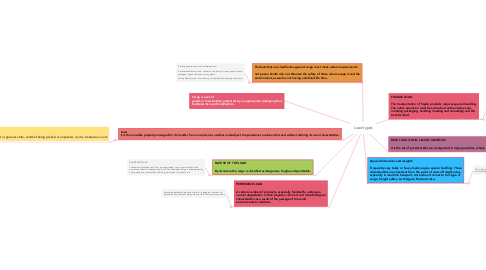Load types
by Jennyfer Nolasco Rodriguez


1. Cargo is a set of goods or merchandise protected by an appropriate packaging that facilitates its rapid mobilization.
2. Products that are classified as general cargo must meet certain requirements: not pose a health risk, not threaten the safety of those who manage it and the environment, as well as not having a defined life time.
2.1. Similarly, general load can be classified into: Fractionated General Load: Consists of individual or loose goods such as: packages, bags and boxes, among others. Unitary General Load: It is made up of individual items grouped into units
3. PERISHABLE LOAD A certain number of products, especially foodstuffs, undergo a normal degradation in their physical, chemical and microbiological characteristics as a result of the passage of time and environmental conditions.
3.1. Among the perishable products are fruits, vegetables, meat and its derivatives, fish, seafood, dairy products, fresh flowers, among others
4. NATURE OF THE LOAD By its nature the cargo is classified as dangerous, fragile and perishable.
4.1. DANGEROUS LOAD: These are merchandise that, if not properly treated, can put human life and the environment where it is transported at risk. The Dangerous Cargo is characterized by having explosive, combustible, oxidizing, poisonous, radioactive etc
5. Load It is the movable property arranged for its transfer from one place to another and subject to operations to achieve this end without altering its main characteristics.
5.1. GENERAL LOAD It is one that comes in a solid, liquid or gaseous state, and that being packed or unpacked, can be treated as a unit.
5.1.1. The general load is transported in packaging whose shape, weight and dimensions conform to its characteristics. Some goods of this type are: computers, shoes, leather articles, clothes, fabrics, general manufactures, etc.
